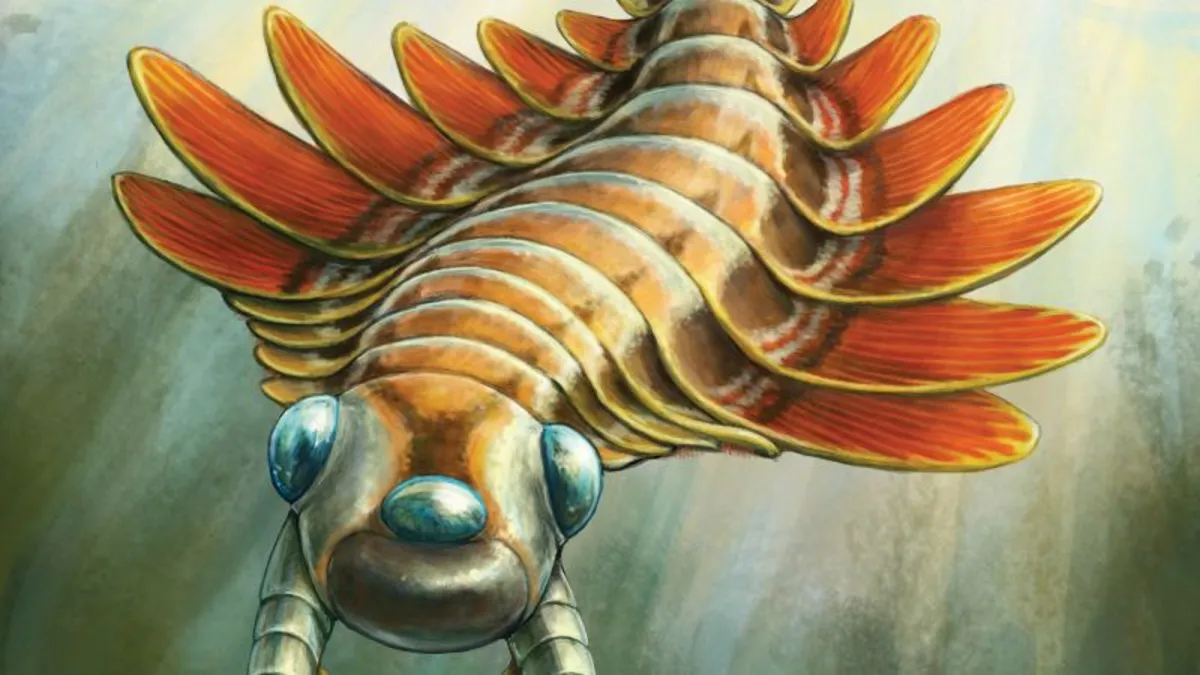
Sign up for CNN’s Wonder Theory science newsletter to explore the universe with news on fascinating discoveries, scientific advancements, and more. Recently, paleontologists have made a groundbreaking discovery involving over five dozen fossils, revealing a tiny, three-eyed predator known as the “sea moth.” This prehistoric creature, scientifically named Mosura fentoni, swam in Earth’s oceans approximately 506 million years ago.
The study detailing this fascinating species was published on Tuesday in the Royal Society Open Science journal. Mosura fentoni is classified as a member of the radiodonts, an early offshoot of the arthropod evolutionary tree. While radiodonts are now extinct, their fossilized remains provide critical insights into the evolution of modern arthropods, which include insects, spiders, and crabs. According to lead study author Dr. Joe Moysiuk, curator of paleontology and geology at the Manitoba Museum in Winnipeg, arthropods represent over 80% of all living animal species.
The well-preserved specimens of Mosura fentoni revealed an intriguing feature not previously observed in any other radiodont: an abdomen-like body region consisting of 16 segments adorned with gills at its rear. This anatomical characteristic resembles a batch of segments found in modern radiodont relatives, such as horseshoe crabs, woodlice, and insects. Dr. Moysiuk explains that this feature likely helped Mosura capture more oxygen, showcasing an example of evolutionary convergence, where similar structures evolve independently across different species.
While no modern animal closely resembles Mosura fentoni, it did possess jointed claws akin to those of today’s insects and crustaceans. Unlike these creatures, which often have two to four additional eyes for orientation, Mosura boasted a distinctive larger third eye centrally located on its head. Dr. Moysiuk notes that, despite not being closely related, Mosura likely swam similarly to a ray, utilizing its multiple sets of swimming flaps in an undulating motion reminiscent of flying underwater.
This ancient marine predator, about the size of an adult human’s index finger, had a mouth resembling a pencil sharpener, lined with serrated plates unlike any living animal. Some specimens of Mosura fentoni revealed traces of front claws that may have aided in feeding. According to Dr. Moysiuk, the claws featured long, smooth-sided spines that were forked at their tips, posing a mystery regarding their exact feeding method. It is believed that Mosura may have captured smaller animals with these spines and directed them towards its mouth.
While direct evidence of Mosura's diet remains elusive, it coexisted with various marine organisms, including acorn worms, bristle worms, and small crustacean-like arthropods that it could have preyed upon. In turn, Mosura may have fallen prey to larger radiodonts, such as the shrimplike Anomalocaris canadensis and the massive jellyfish Burgessomedusa phasmiformis. Dr. Russell D.C. Bicknell, a postdoctoral researcher at the American Museum of Natural History, emphasizes that these findings fill in more details about the ancient marine ecosystem in which Mosura thrived.
The unexpected trunk region of Mosura fentoni challenges existing perceptions regarding the evolution of radiodont bodies. Rudy Lerosey-Aubril, an invertebrate paleontologist at the Harvard Museum of Comparative Zoology, believes this discovery offers a rare glimpse into the developmental processes of early radiodonts, suggesting that significant evolutionary shifts led to the more consistent body organization seen in most known species today.
The first specimen of Mosura fentoni was unearthed in the early 20th century by paleontologist Charles Walcott, who collected fossils from British Columbia’s Burgess Shale, a 508 million-year-old fossil bed. Although Walcott’s findings remained unpublished, subsequent research has gradually revealed the significance of these fossils. Over 60 additional fossils were collected by researchers at the Royal Ontario Museum between 1975 and 2022, enhancing our understanding of radiodont diversity.
The fossils from the Burgess Shale are renowned for their exceptional preservation, allowing researchers to discern traces of the nervous, digestive, and circulatory systems—a rarity in fossil studies. Dr. Moysiuk notes that they discovered nerve bundles in the eyes of Mosura, which the creature likely used for image processing, similar to modern arthropods.
The discovery of numerous complete tiny radiodont specimens underscores the importance of the Burgess Shale for understanding ancient marine life. While radiodont fossils are currently on display at the Royal Ontario Museum’s “Dawn of Life” exhibition, a specimen of Mosura fentoni will also be showcased at the Manitoba Museum later this year. This ongoing research is vital for painting a broader picture of the Cambrian Period's biodiversity and the evolutionary history of marine predators.